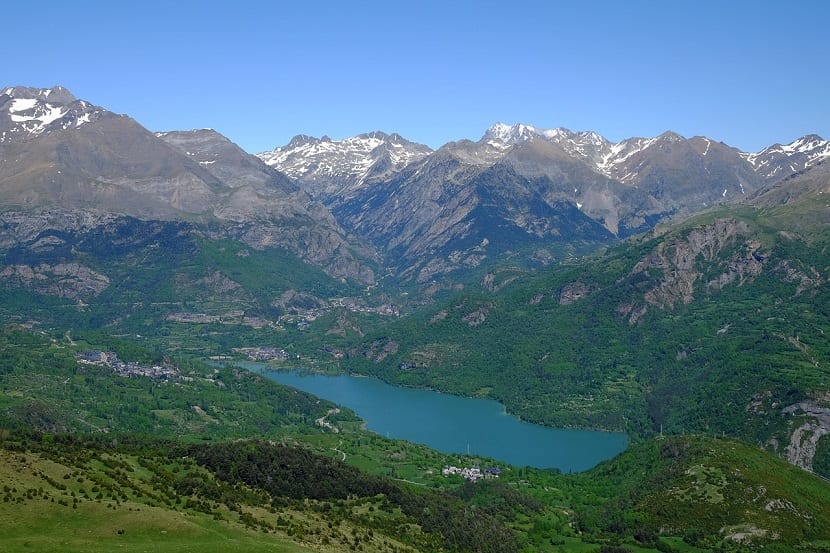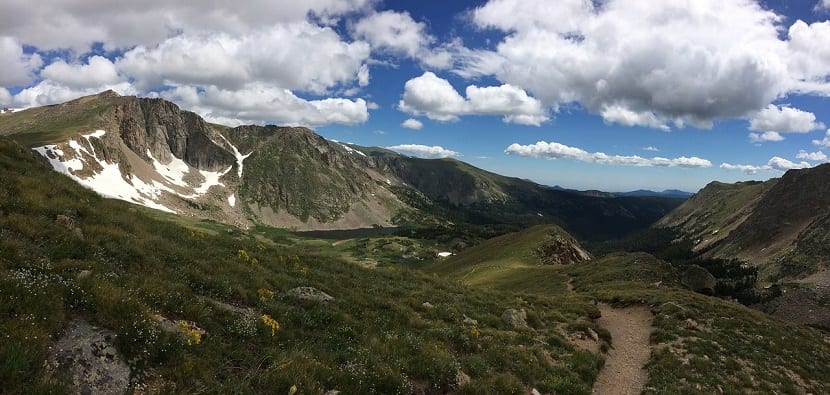
Have you ever noticed that from a certain height the trees no longer grow. If you are adventurous and have also had the opportunity to be in the high mountains, you will have been able to verify it. There is something that usually attracts attention, trees are "cut" from a certain height. Sometimes the difference is progressive, we could draw more or less an imaginary line from which altitude it is most difficult for them to be. Other times the difference is so clear and striking that a precise line is as if it prevents the existence of trees from it. As if something abrupt happened.
This phenomenon is known as the arboreal limit or forest boundary more commonly. And although it is widely accepted that it occurs in high mountain areas, the truth is that it is not something that only affects the heights. We can find the forest boundary depending on the region of the world in which we are. And although we are going to explain why, we can see that it not only affects the trees, but the entire general ecosystem.
Why does it occur?

First of all, the main reasons are ecological. A very relevant factor as you have deduced is the height, for what it entails. From here, we can break down the responsible factors:
- Temperature: Depending on the temperature, the flora can be chosen between one type or another. In the case that affects us, the temperature is usually so low that many trees are unable to adapt to it.
- Humidity: At lower humidity, we have more arid landscapes. The higher the humidity, the more vegetation.
- The composition of the soil
- The lack of pressure in the air: remember that higher up, the pressure decreases.
- The localization: For the alpine wooded line, we find lower elevations often as we approach the poles. On the contrary, higher heights as we move away. For example, Sweden which is at 68ºN the Alpine line is 800 meters away. Norway, at 61ºN we have it at 1.100m. Andorra, 42ºN at 2.300m. Japanese Alps, at 39ºN is at 2900. New Guinea, 6ºS at 3.900.
Regarding point 5, this can vary greatly taking into account the other factors that we have described. But to give you a general idea of how latitude affects, some examples have been marked. We can have a case of tundra for example, at sea level? Yes, here we can check it in Iceland.

Keep in mind that this affects not only the height, but taking into account all the points described. It is not something particular that it always occurs globally with the same conditions, it is global, and consequently with the conditions of each region. In this case, that of Iceland, we have a very young mountainous region, it began to develop 20 million years ago. It is a very volcanic region, quite cold, and very close to the north pole.
Height and ecosystem
The trees, the flora, the animals. Height directly affects everything really. In the same way that we have not been cultivating on the peaks of the Himalayas, animals are also strongly affected by altitude.
At higher altitudes, we find the leading role of invertebrates. Insects such as flies, beetles, bed bugs, etc., can be found at high mountain levels. On the other hand, vertebrates are losing presence. Depending on where we are, of course, we can find certain endemisms, which are species that are found in certain regions, such as some deer, types of goats or marmots, but among the most general would be reptiles, such as salamanders, birds, or some bats. .

The higher the altitude, the more extreme living conditions and the more difficult it is to adapt. We can imagine harsh winters, and not as many comforts as we have near lower elevations or on the coast. But if you like the inspiration that comes with finding yourself in the tranquility, inspiring clean air, and above all, enjoying the views of the magnificent reliefs that nature offers us ... The high mountains are the dream and ideal place, as it already is for many people.
Hello bibliographical source of the information * Humidity: The lower the humidity, we have more arid landscapes. The higher the humidity, the more vegetation ???